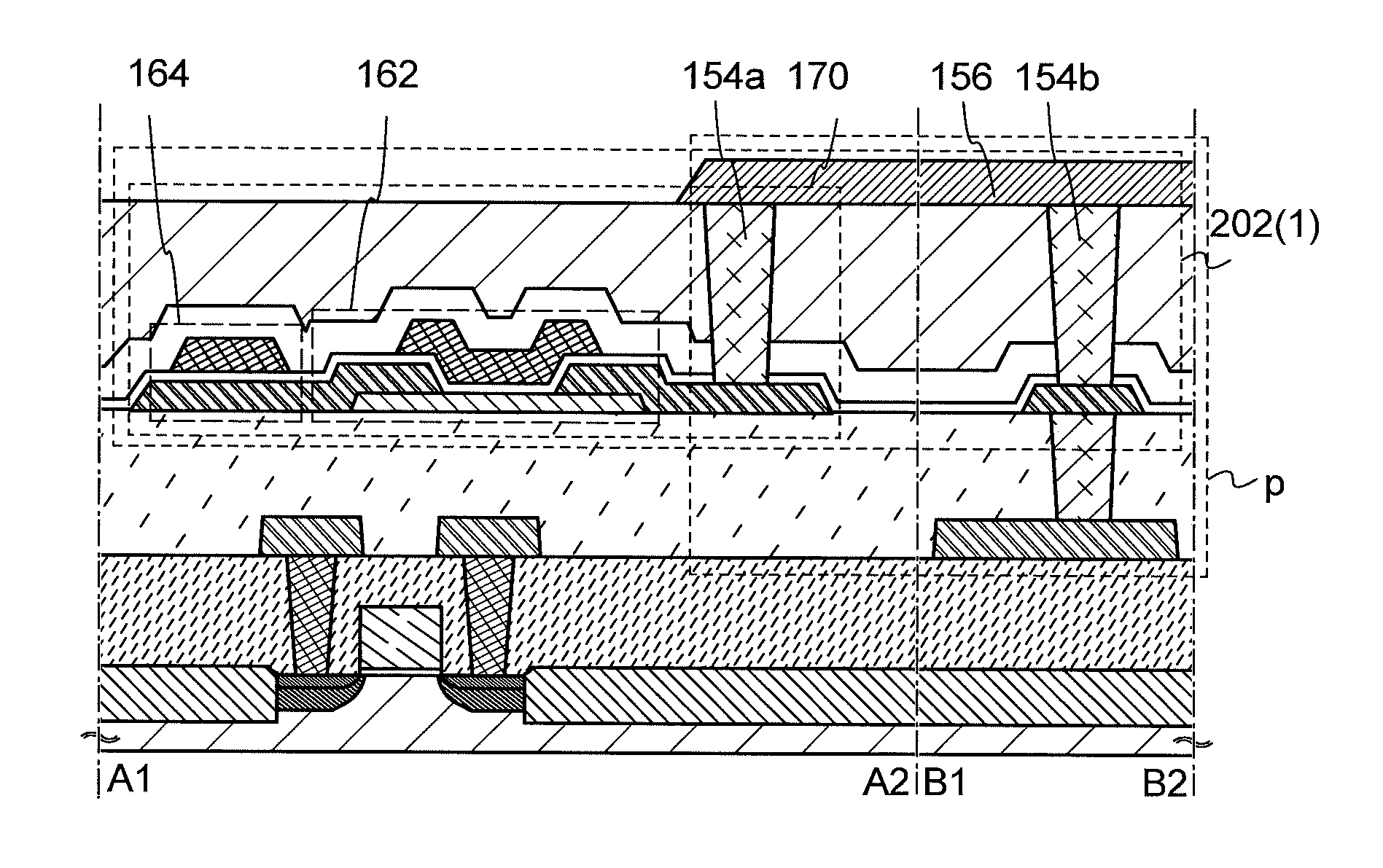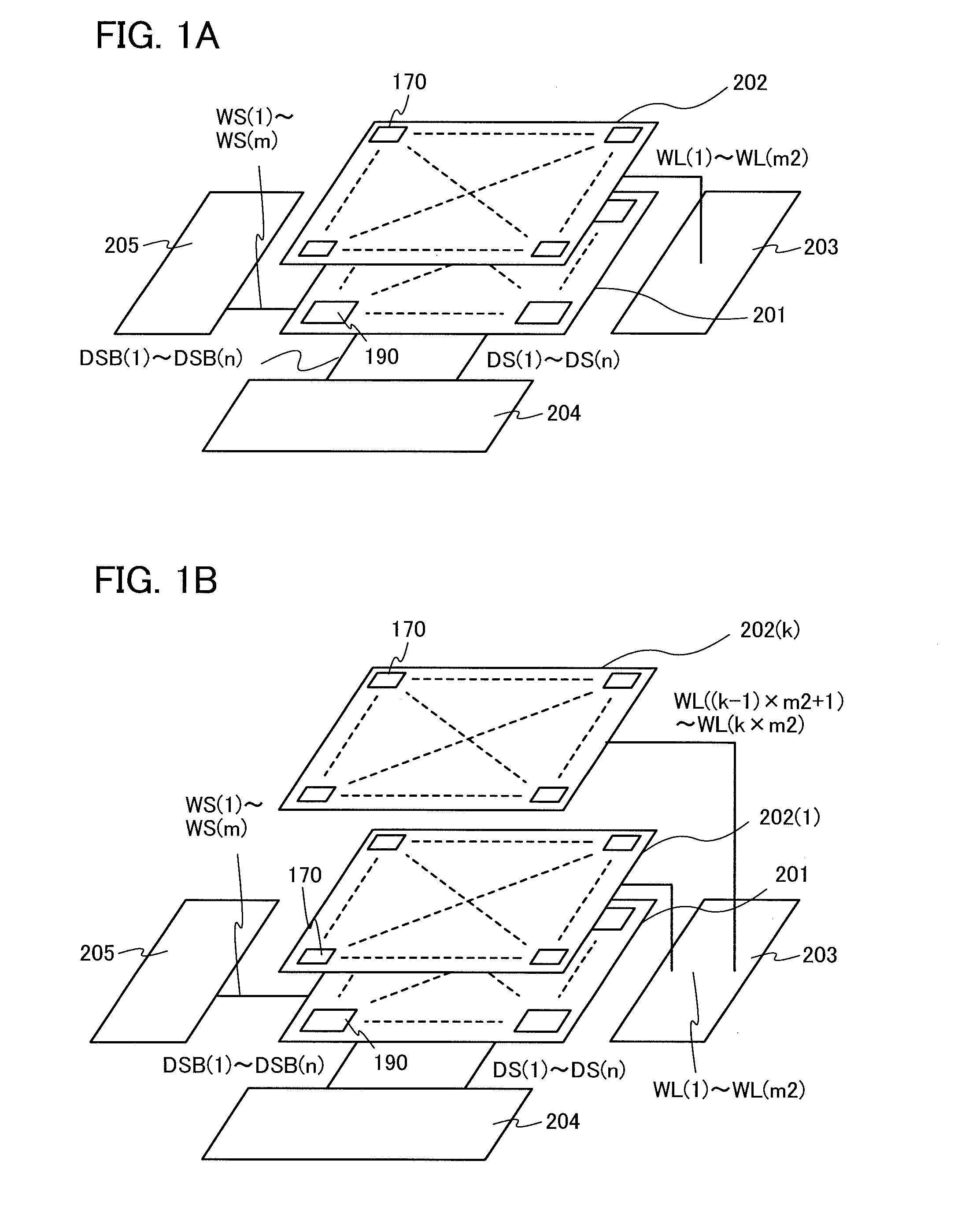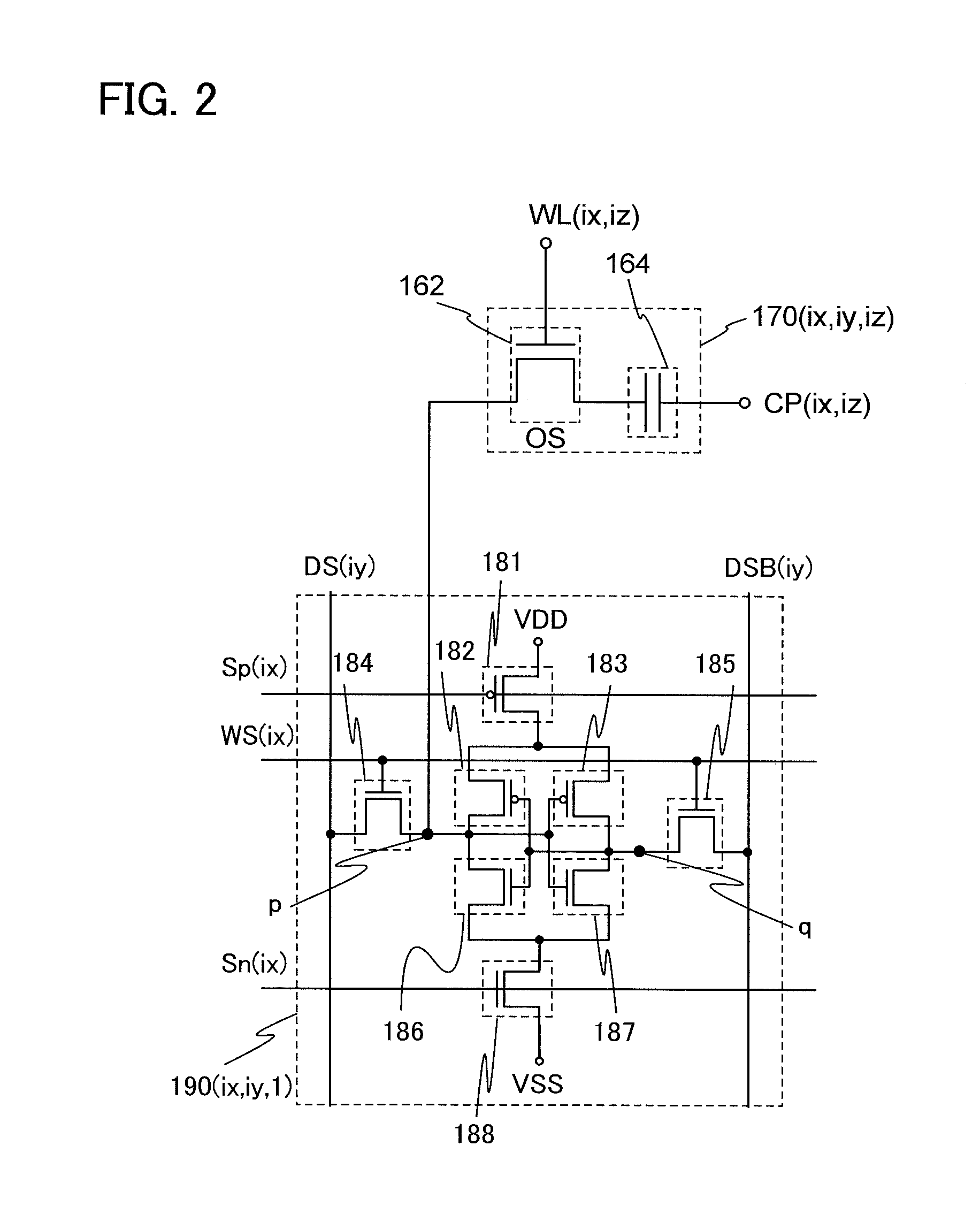Semiconductor device
- Summary
- Abstract
- Description
- Claims
- Application Information
AI Technical Summary
Benefits of technology
Problems solved by technology
Method used
Image
Examples
embodiment 1
[0064]Structures of semiconductor devices according to one embodiment of the present invention will be described with reference to FIGS. 1A and 1B, FIG. 2, FIG. 3, FIGS. 4A to 4D, FIGS. 5A to 5D, and FIG. 6.
[0065]FIGS. 1A and 1B are each a schematic view illustrating an example of a structure of a semiconductor device according to one embodiment of the present invention. The semiconductor device according to one embodiment of the present invention has a stacked structure and includes a memory circuit in an upper portion and a peripheral circuit including a driver circuit, a control circuit, and the like, which needs to operate at high speed for driving the memory circuit, in a lower portion. Note that the driver circuit or the control circuit may be a logic circuit. The driver circuit or the control circuit may include an analog circuit or an arithmetic circuit.
[0066]The semiconductor device illustrated in FIG. 1A includes a sense latch array 201 including a plurality of sense latch...
embodiment 2
[0143]In this embodiment, a structure and a manufacturing method of a semiconductor device according to one embodiment of the present invention will be described with reference to FIG. 7, FIGS. 8A to 8E, FIGS. 9A to 9D, FIGS. 10A to 10C, and FIGS. 11A and 11B.
[0144]FIG. 7 is a cross-sectional view of a semiconductor device according to one embodiment of the present invention. In FIG. 7, A1-A2 is a cross section perpendicular to the channel length direction of a transistor, and B1-B2 is a cross section of the node p. The semiconductor device illustrated in FIG. 7 includes the sense latch array 201 in a lower portion and the memory cell arrays 202(1) to 202(k) in an upper portion. The sense latch array 201 in the lower portion includes a transistor 180 including a semiconductor material other than an oxide semiconductor, and each of the memory cell arrays 202(1) to 202(k) in the upper portion includes the transistor 162 including an oxide semiconductor material.
[0145]The transistor 18...
embodiment 3
[0269]One embodiment of an oxide semiconductor layer which can be used for a channel formation region of a transistor in the above embodiments will be described with reference to FIGS. 12A to 12D.
[0270]The oxide semiconductor layer of this embodiment has a stacked structure including a first crystalline oxide semiconductor layer and a second crystalline oxide semiconductor layer which is over the first crystalline oxide semiconductor layer and has a larger thickness than the first crystalline oxide semiconductor layer.
[0271]A first oxide semiconductor film with a thickness of greater than or equal to 1 nm and less than or equal to 10 nm is formed over an insulating layer 140.
[0272]In this embodiment, an oxide insulating layer with a thickness of greater than or equal to 50 nm and less than or equal to 600 nm is formed as the insulating layer 140 by a PCVD method or a sputtering method. For example, a single layer selected from a silicon oxide film, a gallium oxide film, an aluminum ...
PUM
 Login to View More
Login to View More Abstract
Description
Claims
Application Information
 Login to View More
Login to View More - R&D
- Intellectual Property
- Life Sciences
- Materials
- Tech Scout
- Unparalleled Data Quality
- Higher Quality Content
- 60% Fewer Hallucinations
Browse by: Latest US Patents, China's latest patents, Technical Efficacy Thesaurus, Application Domain, Technology Topic, Popular Technical Reports.
© 2025 PatSnap. All rights reserved.Legal|Privacy policy|Modern Slavery Act Transparency Statement|Sitemap|About US| Contact US: help@patsnap.com



